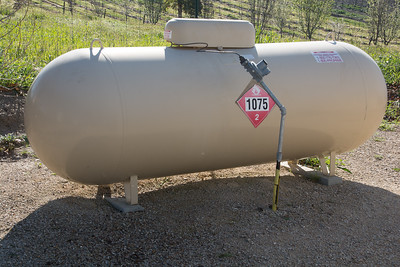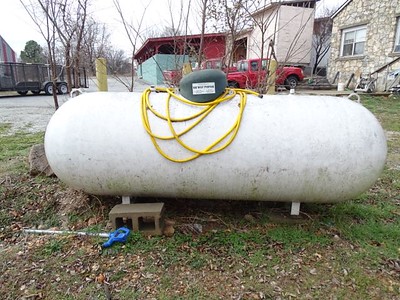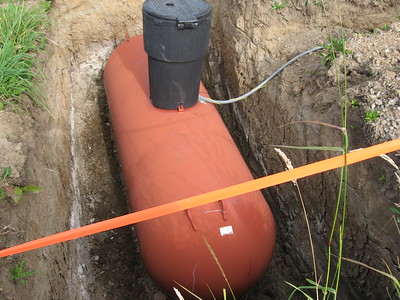
The longevity of a 250-gallon propane tank can range from as little as 30 days to as long as 7 months, depending on usage. The range is due to the variety of appliances being used, their fuel consumption rates, and the frequency of their use.
To get a more accurate estimate of how long your 250-gallon propane tank will last, you’ll need to consider your specific appliances and usage patterns. Be sure to calculate your daily propane consumption based on the BTU ratings of your appliances and the number of hours they are used per day.
Keep in mind that actual usage may vary depending on factors such as outdoor temperature, maintenance, and individual appliance efficiency.
The duration a 250-gallon propane tank will last depends on several factors, including the appliances being used, their fuel consumption rates, and how often they are used. To get a general idea of how long your propane tank might last, follow these steps:
- Determine the propane capacity in British Thermal Units (BTUs). Propane has around 91,500 BTUs per gallon. For a 250-gallon tank, that’s 250 * 91,500 = 22,875,000 BTUs.
- Calculate the total BTU consumption of the appliances you’ll be using. Check the owner’s manuals or appliance labels for their BTU ratings. Add up the BTU ratings for all appliances to get the total BTU consumption per hour.
- Estimate how many hours per day the appliances will be in use.
- Calculate the daily propane consumption by multiplying the total BTU consumption per hour by the number of hours the appliances are used per day.
- Finally, divide the propane capacity (in BTUs) by the daily propane consumption to find out how many days the 250-gallon tank will last.
Please note that this calculation provides a rough estimate, and actual usage may vary depending on factors such as outdoor temperature, maintenance, and individual appliance efficiency.
Understanding propane and BTUs
BTU, or British Thermal Unit, is a unit of energy used to measure heat output. One BTU represents the amount of energy required to raise the temperature of one pound of water by one degree Fahrenheit at sea level. In the context of propane, BTUs are often used to compare the efficiency and heating capacity of various appliances or systems that use propane as a fuel source.
Propane has a high energy content, with one gallon of propane containing approximately 91,500 BTUs. It is an efficient fuel source, as it burns cleanly, producing fewer emissions compared to other fossil fuels like gasoline or diesel. As a result, propane is commonly used in residential, commercial, and industrial applications for space heating, water heating, cooking, and more.
When selecting propane appliances or systems, it’s essential to understand their BTU ratings, which represent the energy output per hour. This information can help you choose the right size and capacity appliance for your home, ensuring optimal performance and energy efficiency.
For example, if you want to heat a 1,000 square foot space, you may need a heater with a BTU output of around 40,000 BTUs per hour, depending on factors like insulation, climate, and desired indoor temperature. Similarly, when comparing different propane grills, you can use the BTU rating to gauge the grill’s heating capacity and efficiency.
Overall, understanding propane and BTUs is crucial when choosing and using propane-fueled appliances or systems to ensure you meet your energy requirements and maintain efficiency.
Calculating Appliance BTU Consumption
Calculating the BTU consumption of your appliances is essential for understanding your energy usage and ensuring you have the appropriate fuel supply and equipment. Here’s a step-by-step guide to calculate your appliance’s BTU consumption:
A. Finding appliance BTU ratings in owner’s manuals or labels:
- Check the owner’s manual: The BTU rating of an appliance is often provided in its owner’s manual. If you don’t have the manual, you can usually find it online by searching for the appliance’s make and model.
- Look for labels: Many appliances have a label or plate that lists their BTU rating. This can typically be found on the back or underside of the appliance.
B. Adding up BTU ratings for all appliances:
- Make a list: Create a list of all the propane-fueled appliances you have in your home or facility, along with their BTU ratings.
- Add the BTU ratings: Sum up the BTU ratings of all the appliances on your list to get the total BTU consumption for all appliances.
C. Determining total BTU consumption per hour:
- Estimate usage time: For each appliance, estimate how many hours it will be used during a specific time period (e.g., per day, per week, or per month). Keep in mind that not all appliances will be used simultaneously or for the same duration.
- Calculate hourly BTU consumption: Multiply the BTU rating of each appliance by the estimated usage time. Add up the results for all appliances to determine the total BTU consumption per hour.
For example, if you have a propane heater rated at 40,000 BTUs per hour and you plan to use it for 5 hours per day, the heater will consume 200,000 BTUs per day (40,000 BTUs x 5 hours).
By calculating your appliances’ BTU consumption, you can better understand your energy usage, plan for fuel supply, and ensure that your propane delivery and storage system can handle the demand.
Estimating Daily Appliance Usage
Estimating daily appliance usage is essential for understanding your energy consumption, managing fuel supply, and ensuring efficiency. Here’s a guide to help you estimate your daily appliance usage:
A. Importance of considering individual usage patterns:
Individual usage patterns vary based on factors such as lifestyle, household size, and appliance types. Understanding your unique usage patterns allows you to make informed decisions about energy consumption, select appropriate appliances, and optimize energy efficiency.
B. Calculating the number of hours each appliance is used per day:
- Observe your habits: Take note of your daily routine and the appliances you use throughout the day. Consider the number of people in your household and their habits as well.
- Estimate usage time: For each appliance, estimate the average number of hours it is used per day. Remember that some appliances, like water heaters, may operate intermittently throughout the day, while others, like space heaters or cooking appliances, may be used for specific periods.
- Adjust for seasonal variations: Keep in mind that some appliances may have different usage patterns depending on the season. For example, a space heater may be used more during colder months and less during warmer months.
C. Calculating daily propane consumption:
- List propane-fueled appliances: Make a list of all the propane-fueled appliances in your home or facility, along with their BTU ratings and estimated daily usage time.
- Calculate daily BTU consumption: Multiply the BTU rating of each appliance by its estimated daily usage time. Add up the results for all appliances to determine the total daily BTU consumption.
- Convert BTUs to propane gallons: To calculate the daily propane consumption in gallons, divide the total daily BTU consumption by the BTUs per gallon of propane (approximately 91,500 BTUs/gallon).
For example, if your total daily BTU consumption is 200,000 BTUs, your daily propane consumption would be around 2.19 gallons (200,000 BTUs ÷ 91,500 BTUs/gallon).
By estimating your daily appliance usage and propane consumption, you can better manage your energy usage, plan for fuel supply, and ensure optimal efficiency in your home or facility.
Factors Affecting Actual Propane Usage
Actual propane usage can be affected by various factors that may cause it to differ from your estimated consumption. Here are some factors that can influence propane usage:
A. Outdoor temperature:
- Seasonal variations: Propane usage tends to increase during colder months due to higher heating demand. In contrast, warmer months typically see lower propane consumption as space heating becomes less necessary.
- Insulation and building envelope: The efficiency of your home or facility’s insulation and building envelope can significantly impact propane usage. A well-insulated building will require less energy for heating, reducing propane consumption. Drafty buildings or those with poor insulation will require more energy to maintain a comfortable temperature, leading to higher propane usage.
B. Maintenance of appliances and propane system:
- Regular maintenance: Regular maintenance of your propane appliances and the overall propane system is crucial for ensuring optimal performance and efficiency. Poorly maintained appliances or systems may consume more propane due to reduced efficiency.
- Timely repairs: Addressing any issues or malfunctions in your propane appliances and system promptly can help prevent excessive propane usage. A malfunctioning appliance may not only consume more propane but also pose safety risks.
C. Individual appliance efficiency:
- Appliance age: Older appliances may be less energy-efficient than newer models, leading to higher propane consumption. Upgrading to more energy-efficient appliances can help reduce propane usage.
- Appliance type and model: Different appliances and models may have varying levels of efficiency, which can affect propane consumption. When purchasing new appliances, look for those with higher efficiency ratings or features designed to conserve energy.
- Proper appliance usage: Using your appliances according to the manufacturer’s recommendations can help optimize their performance and reduce propane consumption. For example, overloading a clothes dryer or using an oversized burner for cooking can result in higher propane usage.
By considering these factors, you can better understand your actual propane usage and take steps to optimize your energy consumption, save on fuel costs, and improve the efficiency of your propane-fueled appliances and systems.
How Long Will A 250-Gallon Propane Tank Last For a House
To determine how long a 250-gallon propane tank will last for a house, you need to consider the size of the house, the propane consumption per square foot, and any additional propane usage for other appliances. In this example, we will only focus on the heating aspect with a consumption rate of 0.341 gallons of propane per square foot.
- Calculate the size of your house: Determine the total square footage of your house. For example, let’s assume your house is 2,000 square feet.
- Calculate daily propane consumption for heating: Multiply the total square footage by the propane consumption rate per square foot. In this example, the daily propane consumption for heating would be 2,000 sq ft * 0.341 gallons/sq ft = 682 gallons.
- Consider additional propane usage: If you are using propane for other appliances such as water heaters, cooking, or clothes drying, you will need to calculate the daily propane consumption for these appliances and add it to your heating consumption.
- Determine the usable propane in the tank: A 250-gallon propane tank is typically filled to around 80% capacity for safety reasons, leaving approximately 200 gallons of usable propane.
- Estimate how long the tank will last: Divide the usable propane in the tank (200 gallons) by your total daily propane consumption (heating plus additional appliances) to estimate the number of days the tank will last.
In this example, if your daily propane consumption for heating is 682 gallons, a 250-gallon propane tank filled to 80% capacity would be insufficient to meet your heating demands for even one day. You would need a much larger propane tank or refill your existing tank more frequently.
Please note that this example assumes constant heating demand, which may not be realistic. In reality, heating demands will vary depending on factors like outdoor temperature, insulation, and personal preferences. It’s crucial to monitor your propane usage and adjust accordingly to ensure you have an adequate supply.
Conclusion
The duration a 250-gallon propane tank will last depends on various factors, including your total propane consumption, the efficiency of your appliances, outdoor temperature, and maintenance of your propane system.
Keep in mind that this is only an estimate, and actual propane usage may vary due to fluctuations in appliance usage, temperature, and other factors. Regularly monitor your propane tank levels and adjust your usage or delivery schedule accordingly to ensure you have an adequate propane supply.

Mike is an experienced propane technician with over 15 years of professional experience in the field. He has dedicated his career to helping customers with their propane needs, from installation to maintenance and repair. Together with Jeremy, he co-founded this website to provide useful information and guidance to customers seeking reliable propane services.




